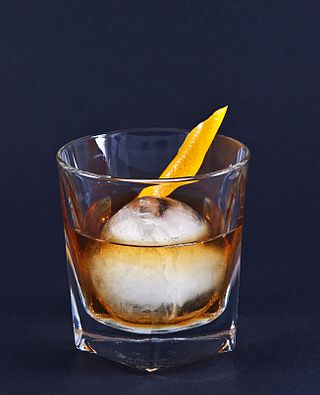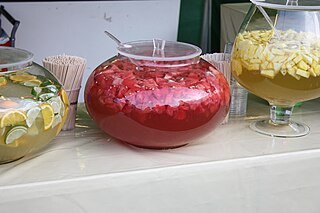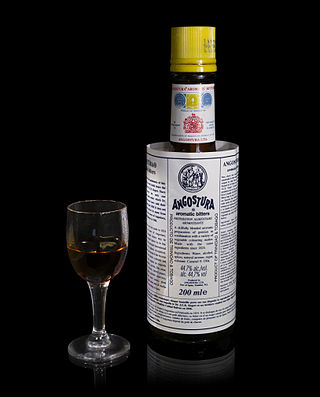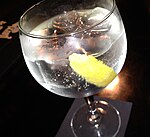
A cocktail is an alcoholic mixed drink or non alcoholic mixed drink. Most commonly, a cocktail is a combination of one or more spirits mixed with other ingredients, such as juices, flavored syrups, tonic water, shrubs, and bitters. Cocktails vary widely across regions of the world, and many websites publish both original recipes and their own interpretations of older and more famous cocktails.

A Manhattan is a cocktail made with whiskey, sweet vermouth, and bitters. While rye is the traditional whiskey of choice, other commonly used whiskies include Canadian whisky, bourbon, blended whiskey, and Tennessee whiskey. The cocktail is usually stirred with ice then strained into a chilled cocktail glass and garnished traditionally with a maraschino cherry. A Manhattan may also be served on the rocks in a lowball glass.

The old fashioned is a cocktail made by muddling sugar with bitters and water, adding whiskey or sometimes brandy, and garnishing with an orange slice or zest and a cocktail cherry. It is traditionally served with ice in an old fashioned glass.
Herbsaint is a brand name of anise-flavored liqueur originally created as an absinthe-substitute in New Orleans, Louisiana in 1934, and currently produced by the Sazerac Company.

Rye whiskey can refer to two different, but related, types of whiskey:

A bitters is traditionally an alcoholic preparation flavored with botanical matter for a bitter or bittersweet flavor. Originally, numerous longstanding brands of bitters were developed as patent medicines, but now are sold as digestifs, sometimes with herbal properties, and as cocktail flavorings.

The term punch refers to a wide assortment of drinks, both non-alcoholic and alcoholic, generally containing fruits or fruit juice. The drink was introduced from the Indian subcontinent to England by employees of the East India Company in the late 17th century. Punch is usually served at parties in large, wide bowls, known as punch bowls.

The negroni is a cocktail, made of equal parts gin, vermouth rosso, and Campari, generally served on the rocks, and commonly garnished with an orange slice or orange peel. It is considered an apéritif.

A hot toddy, also known as hot whiskey in Ireland, and occasionally called southern cough syrup within the Southern United States, is typically a mixed drink made of liquor and water with honey, lemon, herbs and spices, and served hot. Recipes vary, and hot toddy is traditionally drunk as a nightcap before retiring for the night, in wet or cold weather or to relieve the symptoms of the cold and flu. In How to Drink, Victoria Moore describes the drink as "the vitamin C for health, the honey to soothe, the alcohol to numb."

Angostura bitters is a concentrated bitters based on gentian, herbs, and spices, produced by House of Angostura in Trinidad and Tobago. It is typically used for flavouring beverages, or less often, food. The bitters were first produced in the town of Angostura, hence the name, but do not contain angostura bark. The bottle is recognisable by its distinctive oversized label. Angostura is Spanish for "narrowing", the town of Angostura having been at the first narrowing of the Orinoco River.

The Prince of Wales is a cocktail created by Albert Edward, Prince of Wales, who later became King Edward VII. There are several variations of the cocktail, but what they usually have in common is champagne, angostura bitters, sugar, either rye whiskey or cognac, and a liqueur.

Peychaud's Bitters is a bitters distributed by the American Sazerac Company. It was originally created between 1849 and 1857 by Antoine Amédée Peychaud, a Creole apothecary from the French colony of Saint-Domingue who traveled to New Orleans, Louisiana, around 1793. It is a gentian-based bitters, comparable to Angostura bitters, but with a predominant anise aroma combined with a background of mint. Peychaud's Bitters is the definitive component of the Sazerac cocktail. It is currently produced at the Buffalo Trace Distillery in Frankfort, Kentucky.

Sazerac Company, Inc. is a privately held American alcoholic beverage company headquartered in Metairie in the metropolitan area of New Orleans, Louisiana, but with its principal office in Louisville, Kentucky. The company is owned by billionaire William Goldring and his family. As of 2017, it operated nine distilleries, had 2,000 employees, and operated in 112 countries. It is one of the two largest spirits companies in the United States, with annual revenue of about $1 billion made from selling about 300 beverage brands.
The Modernista is a scotch whisky cocktail livened up by the addition of absinthe/pastis and arrack-based Swedish Punsch. It was listed in Ted Haigh's book Vintage Spirits and Forgotten Cocktails, and is also known as the Modern Maid cocktail. A bitter cocktail balanced by punsch, it has been called "a sophisticated, if challenging, beverage".
The corpse reviver family of named cocktails are sometimes drunk as alcoholic hangover tongue-in-cheek "cures", of potency or characteristics to be able to revive even a dead person. Some corpse reviver cocktail recipes have been lost to time, but several variations commonly thought to be tied to the American Bar at the Savoy Hotel remain, especially those espoused by Harry Craddock that originally date back to at least 1930 and are still being made. Many "reviver" variations exist and the word is sometimes used as a generic moniker for any morning-after cocktail, also known as a "hair of the dog".

The cuisine of New Orleans encompasses common dishes and foods in New Orleans, Louisiana. It is perhaps the most distinctively recognized regional cuisine in the United States. Some of the dishes originated in New Orleans, while others are common and popular in the city and surrounding areas, such as the Mississippi River Delta and southern Louisiana. The cuisine of New Orleans is heavily influenced by Creole cuisine, Cajun cuisine, and soul food. Later on, due to immigration, Italian cuisine and Sicilian cuisine also has some influence on the cuisine of New Orleans. Seafood also plays a prominent part in the cuisine. Dishes invented in New Orleans include po' boy and muffuletta sandwiches, oysters Rockefeller and oysters Bienville, pompano en papillote, and bananas Foster, among others.
The Zazarack cocktail, later spelled Zazarac, is an American cocktail which may be related to the Sazerac, although it might have originated completely independent of the more famous drink.

The Vieux Carré is an IBA official cocktail made with rye whiskey, cognac, sweet vermouth, Bénédictine, and Peychaud's bitters. It originated with Walter Bergeron, a bartender at the Carousel Bar in Hotel Monteleone, New Orleans. The name is French for "old square”, in reference to the city's French Quarter neighborhood. The drink is classified as one of the Unforgettables by the IBA.
A Green Swizzle is an alcohol-containing cocktail of the sour family. It was popular in Trinidad at the beginning of the 20th century but got lost during the course of the Second World War. Today's recipes usually constitute an often distinct divergence from the original.
















